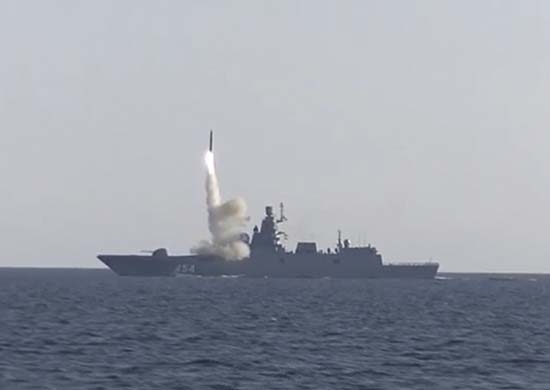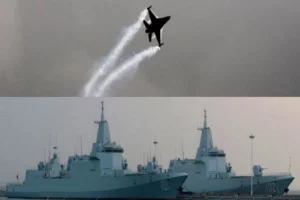Russia is set for another hypersonic missile test from a nuclear submarine—a move that will help Moscow negotiate with the United States from a position of strength in the future.
Tass news agency is reporting that Russia may test its Tsirkon hypersonic missile for the first time in August from Severodvinsk—a nuclear powered submarine, which is part of the country’s Northern Fleet.
"The first test-launch of the Tsirkon missile from the Severodvinsk nuclear-powered submarine as part of the flight development test may take place in August," Tass quoted a source on the sidelines of the MAKS-2021 international air show.
A hypersonic missile, which can travel at more than seven times the speed of sound can cause extensive damage as it cannot be shot down by any known anti-missile defence system. The Tsirkon is being developed by Russia’s Reutov Research and Production Association of Machine-Building.
Citing several sources, Tass is reporting that the Tsirkon can strike ground targets 1,500 kilometres away. It can hit naval targets at a lesser, unspecified distance. According to an earlier schedule, the Tsirkon hypersonic missile was slated for induction in 2023.
Russia’s Defence Ministry had earlier announced on July 19, that the hypersonic missile had been launched from a surface ship—Admiral Gorshkov. The missile flew at Mach 7 (seven times the speed of sound) to strike at a target 350 km away. The weapon was fired from a location in the White Sea, and hit a target on the coast of the Barents Sea.
The serial testing of the hypersonic missile is expected to strengthen Moscow’s hand during the New START negotiations, which are expected to cut down Russia and the US’ long range strategic missiles by significant numbers. Since hypersonic missiles are not covered under the New START treaty, their presence in the Russian arsenal will give Moscow a leg-up during arms control negotiations in the future.
"The New Strategic Arms Reduction Treaty (New START), the only active treaty limiting the deployment of US and Russian nuclear weapons, does not explicitly restrict hypersonic missiles — an omission that turns out to be intentional. Either nation could conceivably take advantage of this gap in the treaty’s coverage to expand their nuclear-capable missile forces, unfettered by the carefully constructed arms control regime that protects global nuclear stability, wrote Cameron Tracy on All Things Nuclear website.
According to the US State Department, the Russian Federation, on September 1, 2020, had declared 1,447 deployed strategic warheads and has the capacity to deploy many more than 1,550 warheads on its modernized Inter Continental Ballistic Missiles (ICBMs) and Submarine Launched Ballistic Missiles (SLBMs), as well as heavy bombers, but "is constrained from doing so" by New START.
Ahead of a new round of arms control talks with the US, Russia is supplementing its show of strength with some tough words.
The Russian navy can spot any enemy and launch an "unpreventable strike" if needed, Russian President Vladimir Putin said on Sunday, during a navy day address in St. Petersburg, according to a Reuters report.
"We are capable of detecting any underwater, above-water, airborne enemy and, if required, carry out an unpreventable strike against it," Putin said speaking at a navy day parade in St Petersburg.
Read more: Russia's Zircon hypersonic super missile likely to change rules of warfare




















